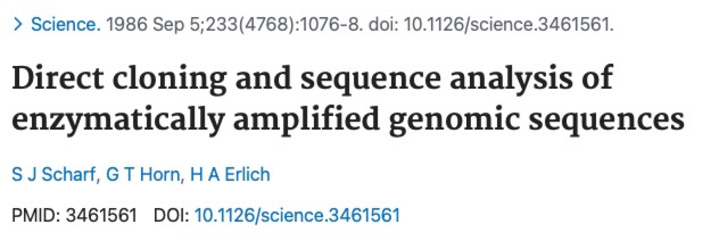Puma Cat
Well-known member
- Thread Author
- #1
40th Annniversary of PCR in November
It just occurred to me today that the 40th Anniversary of the first experiments demonstrating that the polymerase chain reaction, aka "PCR" is next month, in November.
I was working as molecular biologist at Cetus Corp. in the SF Bay Area at the time, and my colleague and head of our DNA Synthesis lab, Kary Mullis, conceived of the idea of PCR, but given he was a terrible "bench scientist", could not get it to work.
Our VP of R&D, Tom White, assigned me with the responsibility of determing if PCR actually worked or not, and I did those experiments in the first part of November, 1983.
And...it did! I remember showing my manager the very first results, which were encouraging, and we were "off to the races", as it were.
For those who haven't wrapped their head around exactly what PCR does, it's fairly simple: it performs the same function in molecular biology that a transistor does in electronics: it specifically amplifies a "signal of interest" against "background" so that it can be easily, reproducibly, and repeatibly detected.
The rest, they say, is history.
Just for yucks, here's the title pages of some of my key papers published in PCR: the first being the first use of PCR for molecular nucleic acid cloning, and the second, using it to characterize the Retinoblastoma VNTR (variable number tandem repeat.). Using PCR was a veritable breakthrough for cloning because projects to clone a single single-copy gene from the human genome could take several months to the better part of a year at the time, and with PCR, we could clone the specific target directly, and drop it into M13 for DNA sequencing in less than a week!

I used the second paper on amplifying the Retinoblastoma VNTR as the basis for establishing a PCR-based method for bone marrow transplantation surgeons to be able to, for the first time, quantitatively monitor allogeneic bone marrow transplant engraftment. Which I must say, was pretty dang cool....

Those were the days....
It just occurred to me today that the 40th Anniversary of the first experiments demonstrating that the polymerase chain reaction, aka "PCR" is next month, in November.
I was working as molecular biologist at Cetus Corp. in the SF Bay Area at the time, and my colleague and head of our DNA Synthesis lab, Kary Mullis, conceived of the idea of PCR, but given he was a terrible "bench scientist", could not get it to work.
Our VP of R&D, Tom White, assigned me with the responsibility of determing if PCR actually worked or not, and I did those experiments in the first part of November, 1983.
And...it did! I remember showing my manager the very first results, which were encouraging, and we were "off to the races", as it were.
For those who haven't wrapped their head around exactly what PCR does, it's fairly simple: it performs the same function in molecular biology that a transistor does in electronics: it specifically amplifies a "signal of interest" against "background" so that it can be easily, reproducibly, and repeatibly detected.
The rest, they say, is history.
Just for yucks, here's the title pages of some of my key papers published in PCR: the first being the first use of PCR for molecular nucleic acid cloning, and the second, using it to characterize the Retinoblastoma VNTR (variable number tandem repeat.). Using PCR was a veritable breakthrough for cloning because projects to clone a single single-copy gene from the human genome could take several months to the better part of a year at the time, and with PCR, we could clone the specific target directly, and drop it into M13 for DNA sequencing in less than a week!

I used the second paper on amplifying the Retinoblastoma VNTR as the basis for establishing a PCR-based method for bone marrow transplantation surgeons to be able to, for the first time, quantitatively monitor allogeneic bone marrow transplant engraftment. Which I must say, was pretty dang cool....

Those were the days....
